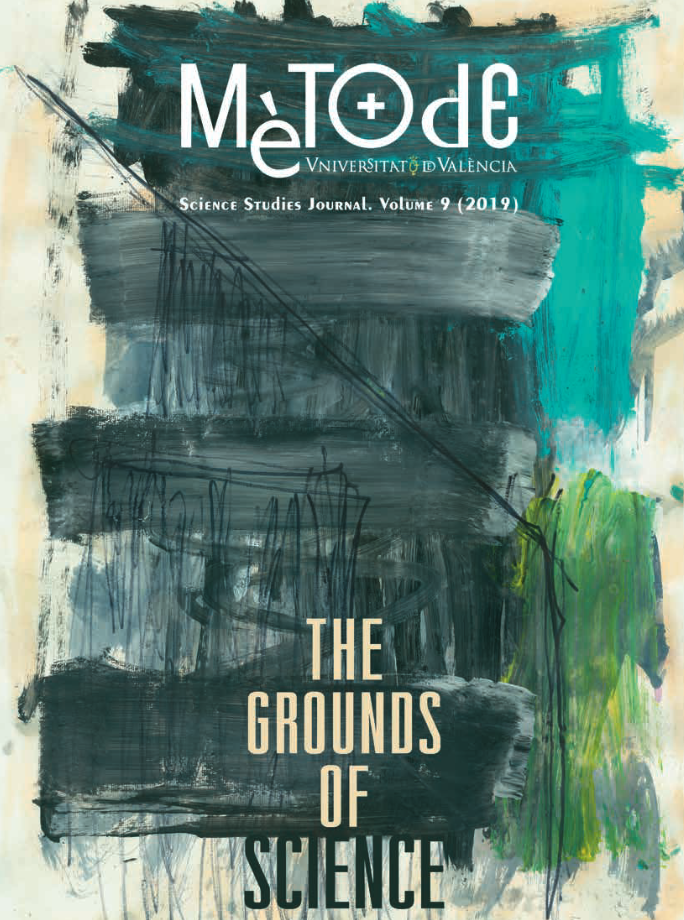Biotechnology, communication and the public: Keys to delve into the social perception of science
DOI:
https://doi.org/10.7203/metode.9.11347Keywords:
biotechnology, communication, public understanding of science, genetic engineering, GMOs Abstract
Abstract
The latest biotechnology applications allow for faster and cheaper gene editing than ever before. Many people are calling for a public debate on these issues, including the social, cultural and ethical implications of these applications. On the other hand, the information available to citizens is sometimes contradictory and communication that takes all these aspects into account is important and increasingly necessary. Therefore, understanding public attitudes towards biotechnology should be a priority for the work ahead.
 Downloads
Downloads
 References
References
Akin, H., & Scheufele, D. A. (2017). Overview of the science of science communication. In K. Jamieson, D. Kahan, & D. Scheufele (Eds.), The Oxford handbook of the science of science communication. New York: Oxford University Press. doi: 10.1093/oxfordhb/9780190497620.013.3
Anderson, A. A., Brossard, D., Scheufele, D. A., Xenos, M. A., & Ladwig, P. (2013). The «nasty effect»: Online incivility and risk perceptions of emerging technologies. Journal of Computer-Mediated Communication, 19(3), 373–387. doi: 10.1111/jcc4.12009
Brossard, D. (2012). Social challenges: Public opinion and agricultural biotechnology. In J. Popp, M. Jahn, M. Matlock, & N. Kemper (Eds.), The role of biotechnology in a sustainable food supply(pp. 17–28). New York: Cambridge University Press.
Brossard, D. (2013). New media landscapes and the science information consumer. Proceedings of the National Academy of Sciences, 110(3), 14096–14101. doi: 10.1073/pnas.1212744110
Brossard, D. (2014). Science, its publics and new media: Reflecting on the present and future of science communication. Mètode Science Studies Journal - Annual Review, 4, 193–197. doi: 10.7203/metode.80.3123
Brossard, D., Nesbitt, C., & Shanahan, J. (Eds.). (2007). The media, the public, and agricultural biotechnology.Cambridge, MA: CABI/Oxford University Press.
Brossard, D. & Nisbet, M. C. (2007). Deference to scientific authority among a low information public: Understanding U.S. opinion on agricultural biotechnology. International Journal of Public Opinion Research, 19(1), 24–52. doi: 10.1093/ijpor/edl003
Brossard, D., Scheufele, D. A., Kim, E., & Lewenstein, B. V. (2009). Religiosity as a perceptual filter: Examining processes of opinion formation about nanotechnology. Public Understanding of Science, 18(5), 546–558. doi: 10.1177/0963662507087304
Covello, V. T. (2010). Risk communication. In H. Frumkin (Ed.), Environmental health: From local to global(pp. 1099–1140). San Francisco, CA: Wiley.
Funtowicz, S. O., & Ravetz, J. R. (1992). Three types of risk assessment and the emergence of postnormal science. In S. Krimsky, & D. Golding (Eds.), Social theories of risk(pp. 251–273). Westport, CT: Greenwood.
Gould, F., Amasino, R. M., Brossard, D., Buell, C. R., Dixon, R. A., Falck-Zepeda, J. B., ... Whitaker, R. J. (2017). Elevating the conversation about GE crops. Nature Biotechnology, 35(4), 302–304. doi: 10.1038/nbt.3841
Ho, S. S., Brossard, D., & Scheufele, D. A. (2008). Effects of value predispositions, mass media use, and knowledge on public attitudes toward embryonic stem cell research. International Journal of Public Opinion Research, 20(2), 171–192. doi: 10.1093/ijpor/edn017
Kahan, D. M., Braman, D., Slovic, P., Gastil, J, & Cohen, G. (2009). Cultural cognition of the risks and benefits of nanotechnology. Nature Nanotechnology, 4(2), 87–90. doi: 10.1038/nnano.2008.341
Kunda, Z. (1990). The case for motivated reasoning. Psychological Bulletin, 108(3), 480–498. doi: 10.1037/0033-2909.108.3.480
Ma, H., Marti-Gutierrez, N., Park, S. W., Wu, J., Lee, Y., Suzuki, K., … Mitalipov, S. (2017). Correction of a pathogenic gene mutation in human embryos. Nature, 548, 413–419. doi: 10.1038/nature23305
Merriam-Webster, T. (2018). Biotechnology. In Merriam-Webster’s online dictionary. Retrieved from https://www.merriam-webster.com/dictionary/biotechnology
National Academies of Sciences, Engineering, and Medicine. (2016). Genetically engineered crops: Experiences and prospects. Washington, DC: The National Academies Press. doi: 10.17226/23395
National Academies of Sciences, Engineering, and Medicine. (2017). Human genome editing: Science, ethics, and governance. Washington, DC: The National Academies Press. doi: 10.17226/24623
Nature. (2017). Gene editing in legal limbo in Europe. Nature, 542, 392. doi: 10.1038/542392a
Pew Research Center. (2016). Smartphone ownership and Internet usage continues to climb in emerging economies but advanced economies still have higher rates of technology use. Washington, DC: Pew Research Center. Retrieved from http://www.pewglobal.org/2016/02/22/internet-access-growing-worldwide-but-remains-higher-in-advanced-economies
Reuters Institute. (2017). Digital news report 2017. Oxford: Reuters Institute for the Study of Journalism. Retrieved from https://reutersinstitute.politics.ox.ac.uk/sites/default/files/Digital%20News%20Report%202017%20web_0.pdf
Scheufele, D. A., Xenos, M. A., Howell, E. L., Rose, K. M., Brossard, D., & Hardy, B. W. (2017). U. S. attitudes on human genome editing. Science, 357(6351), 553–554. doi: 10.1126/science.aan3708
Yeo, S., Cacciatore, M., & Scheufele, D. (2015). News selectivity and beyond: Motivated reasoning in a changing media environment. In O. Jandura, T. Petersen, C. Mothes, & A. M. Schielicke (Eds.), Publizistik und gesellschaftliche Verantwortung(pp. 83–104). Wiesbaden: Springer.
Yeo, S. K., Xenos, M., Brossard, D., & Scheufele, D. A. (2015). Selecting our own science: How communication contexts and individual traits shape information seeking. The ANNALS of the American Academy of Political and Social Science, 658(1), 172–191. doi: 10.1177/0002716214557782
Downloads
Published
How to Cite
-
Abstract2813
-
PDF1119
Issue
Section
License
![]()
All the documents in the OJS platform are open access and property of their respective authors.
Authors publishing in the journal agree to the following terms:
- Authors keep the rights and guarantee Metode Science Studies Journal the right to be the first publication of the document, licensed under a Creative Commons Attribution-NonCommercial-NoDerivatives 4.0 International License that allows others to share the work with an acknowledgement of authorship and publication in the journal.
- Authors are allowed and encouraged to spread their work through electronic means using personal or institutional websites (institutional open archives, personal websites or professional and academic networks profiles) once the text has been published.





